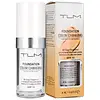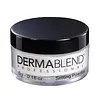What's inside
What's inside
 Key Ingredients
Key Ingredients

No key ingredients
 Concerns
Concerns

No concerns
 Ingredients Side-by-side
Ingredients Side-by-side

Titanium Dioxide
Cosmetic ColorantParaffinum Liquidum
EmollientParaffin
PerfumingCera Microcristallina
Emulsion StabilisingGlyceryl Stearate
EmollientPetrolatum
EmollientSilica Silylate
EmollientHydroxycitronellal
PerfumingEugenol
PerfumingIsoeugenol
PerfumingButylphenyl Methylpropional
PerfumingCoumarin
PerfumingCitronellol
PerfumingGeraniol
PerfumingLimonene
PerfumingCitral
PerfumingAmyl Cinnamal
PerfumingLinalool
PerfumingParfum
MaskingCI 77491
Cosmetic ColorantCI 77492
Cosmetic ColorantCI 77499
Cosmetic ColorantTitanium Dioxide, Paraffinum Liquidum, Paraffin, Cera Microcristallina, Glyceryl Stearate, Petrolatum, Silica Silylate, Hydroxycitronellal, Eugenol, Isoeugenol, Butylphenyl Methylpropional, Coumarin, Citronellol, Geraniol, Limonene, Citral, Amyl Cinnamal, Linalool, Parfum, CI 77491, CI 77492, CI 77499
 Reviews
Reviews

Ingredients Explained
These ingredients are found in both products.
Ingredients higher up in an ingredient list are typically present in a larger amount.
Ci 77491 is also hydrated iron III oxide. It's sole purpose is to give a red/pink hue to products.
Iron III oxides are classified as inorganic chemicals for coloring.
Synthetically created Ci 77491 is considered safer than those naturally found. This is because the synthetically created version may contain less impurities. Iron oxides are generally non-toxic and non-allergenic.
Learn more about CI 77491Ci 77492 is also hydrated iron III oxide. It's sole purpose is to give a yellow hue to products.
Iron III oxides are classified as inorganic chemicals for coloring.
Synthetically created Ci 77492 is considered safer than those naturally found. This is because the synthetically created version may contain less impurities. Iron oxides are generally non-toxic and non-allergenic.
Learn more about CI 77492Ci 77499 is also hydrated iron III oxide. It is created from mixing red and black iron oxides. This helps give shades of darkness to a product.
Iron III oxides are classified as inorganic chemicals for coloring.